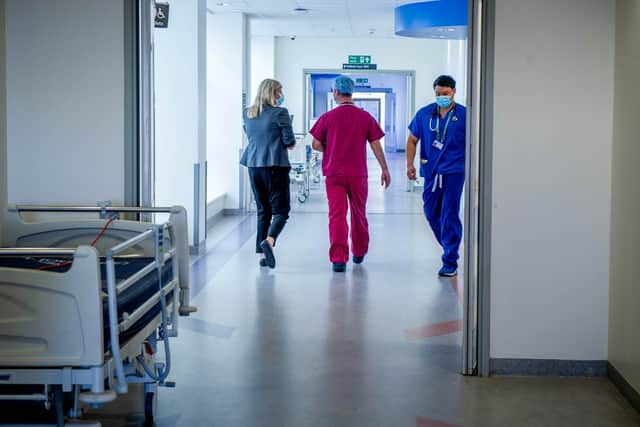Patients turning up at A&E without anything wrong with them cost QA £800,000
and live on Freeview channel 276
The Royal College of Emergency Medicine said many people anxious about their health have ‘no alternative’ but to turn to A&E for treatment, and added that pressures on emergency departments should not fall on the public.
NHS Digital data shows roughly 7,360 admissions had a primary diagnosis of ‘nothing abnormal detected’ at Portsmouth Hospitals University NHS Trust in 2019-20.
Advertisement
Hide AdAdvertisement
Hide AdThese attendances cost the trust £817,500 over the period and accounted for five per cent of all emergency activity.


The NHS says A&E is for serious and life-threatening emergencies, with patients urged to call 111 about other urgent illnesses.
But Dr Adrian Boyle, vice president of the RCEM, warned there are ‘many reasons’ why someone could attend an emergency department and then be discharged with no serious diagnosis made.
‘They may attend because there is simply no alternative, or they are directed there by an external agency,’ he said.
Advertisement
Hide AdAdvertisement
Hide AdDr Boyle added: ‘If patients are unsure about attending A&E or if they have a non-life-threatening condition then they should call NHS 111 where they will be directed to the best care for their particular condition.
‘But crucially patients won’t know the severity of their condition without clinical expertise or examination. Sometimes cases do show no abnormality and at those times we will discharge the patients appropriately.
‘However, there are times when we do discover something serious and their attendance may save their life as we are able to swiftly provide appropriate treatment.’
He said concern over pressures on A&E departments should not be shouldered by the public, adding that an ‘adequately staffed and funded’ health service can meet patient and community demand.
Advertisement
Hide AdAdvertisement
Hide AdAcross all trusts in England which provided figures, £178m was spent on 1.1m non-urgent A&E attendances in 2019-20.
QA piloted a new scheme last summer in which patients could call 111 and be offered an appointment at A&E instead of just turning up, should they be in a non-life-threatening condition. The idea was to reduce the amount of time people had to wait, and also to reduce the risk of spreading Covid-19. The system has since been spread nationwide.
Sarah Scobie, deputy director of research at the Nuffield Trust health think tank, said despite A&E attendances dropping ‘significantly’ during the pandemic, those with a listed diagnosis of ‘nothing abnormal’ did not fall any further than other admission types.
She said: ‘This suggests that they could not be helped elsewhere in the system or still felt that A&E was the most appropriate service for them.’
Advertisement
Hide AdAdvertisement
Hide AdMs Scobie added that the NHS has made several attempts to divert patients with less serious conditions, including encouraging patients to use the 111 service.
‘This process may reduce pressure on “front door” services but is unlikely to reduce admissions to hospitals from those with an urgent need for care,’ she said.
At Portsmouth Hospitals Trust, dislocations, fractures, joint injuries or amputations were the most common issues in 2019-20 – for which a diagnosis was listed – accounting for 12,065 emergency episodes.